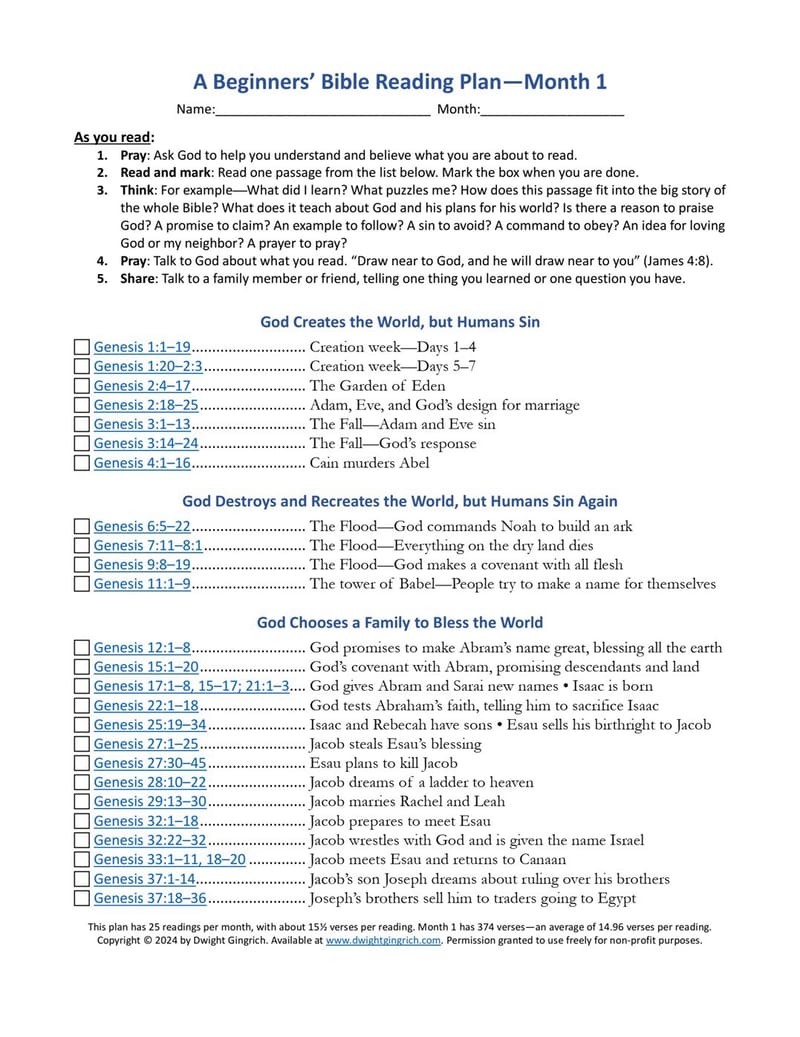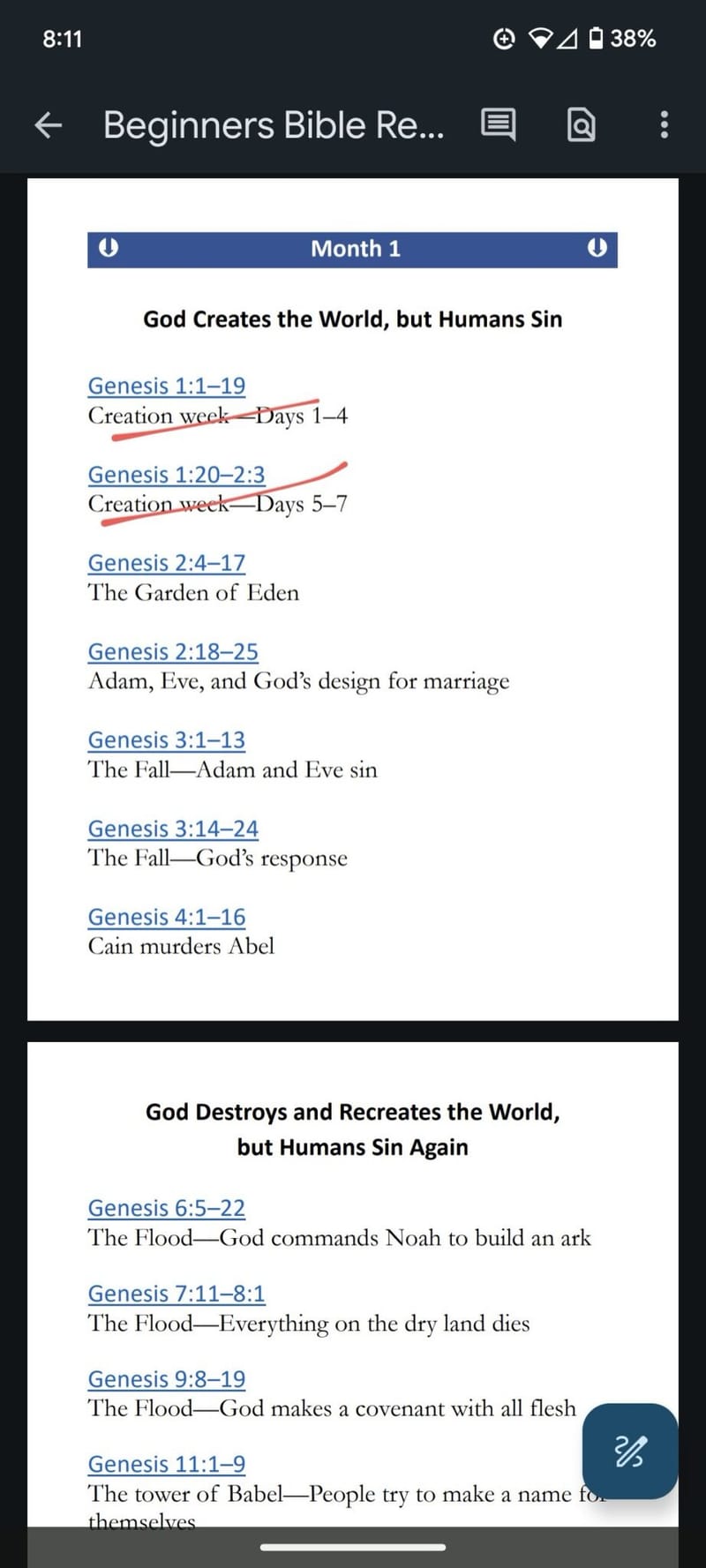Survey the Bible in one year, reading only about 15 verses a day!
Here is a new version (2024) of a Bible reading plan that I first created in 2014. Most of the substance remains the same but I’m excited about the improvements:
- Some better text selections, with more from Psalms and Isaiah and more passages showing connections between Old and New Testaments;
- Better passage summaries and headings;
- Fewer typos;
- More attractive typefaces; and
- Improved functionality, with hyperlinks for reading online in over 150 versions and 50 languages at BibleGateway.com and a large-print edition that will work better on mobile devices.
Choose and download a PDF of the plan:
Print / PC Version
Mobile Version
What parts of the Bible will I read? Readings are included from every book of the Bible, with 8 months of Old Testament readings and 4 months in the New Testament. This plan includes about 4,660 key verses out of about 31,100 verses in the whole Bible. That’s over 1/7th or nearly 15% of the Bible.
How were the readings chosen? Passages were chosen that (1) trace the big story of the whole Bible with many of its central themes, (2) reflect the literary and topical diversity of the Bible, and (3) avoid some adult content that may be less suitable for younger readers. Readings are arranged mostly in chronological order, but also thematically, with descriptions and headings to guide readers.
Who should use this plan? I first created this guide for my oldest daughter when she was five years old and already an eager reader. But this plan is equally well-suited for several kinds of adults—those new to the Bible, slower readers, or anyone who wants to survey key passages of the Bible at a pace that gives plenty of time for meditation.
What is the suggested reading schedule? Each monthly handout of 25 readings can be completed using one of these suggested schedules: (1) Read 6 days a week until finished; (2) Read 5 days a week plus do one 5-reading day each month. The average length of each reading is only about 15½ verses, so if you fall behind you can easily catch up by finishing several readings per day.
When can I begin? Months are unnamed on the 12 handouts, so you can begin any time of the year. Why not start today?
Can I use this guide to read the Bible online? Yes! Each Bible reference in this PDF document is a link to the Bible Gateway website, taking you directly to each day’s passage(s) in whichever Bible translation you last used when visiting Bible Gateway. Also, some PDF apps have a highlight feature you can use in the downloaded document to mark readings as you complete them.
Which Bible translation should I use? Use a translation that is trustworthy and that communicates clearly. For most English readers, the best choice may be the NIV (New International Version), which is both exceptionally readable and faithful to the original biblical texts. Similar choices include the CSB (Christian Standard Bible), NASB 2020 (the newest New American Standard Bible), and NET Bible (New English Translation). Beginning readers will find the NLT (New Living Translation) and NIRV (New International Reader’s Version) helpful, though they sometimes sacrifice accuracy for readability.
Readers who prioritize a more word-for-word translation approach also have solid choices. The ESV (English Standard Version) and NKJV (New King James Version) lean in this direction and the NASB 1995—somewhat harder to read—is the most word-for-word of all the translations mentioned here. (The Bible quotations in this guide come from the ESV, which has been a good fit for our family.)
Finally, to gain the greatest benefit from this Bible reading plan, avoid translations that use archaic language or publications that are actually paraphrases rather than genuine translations.
A Beginners’ Bible Reading Plan is copyrighted © 2024 by Dwight Gingrich. Permission is granted to use freely for non-profit purposes.
An image of the first month of the Print / PC version:
A screenshot of the Mobile version, with highlights marking completed readings:

